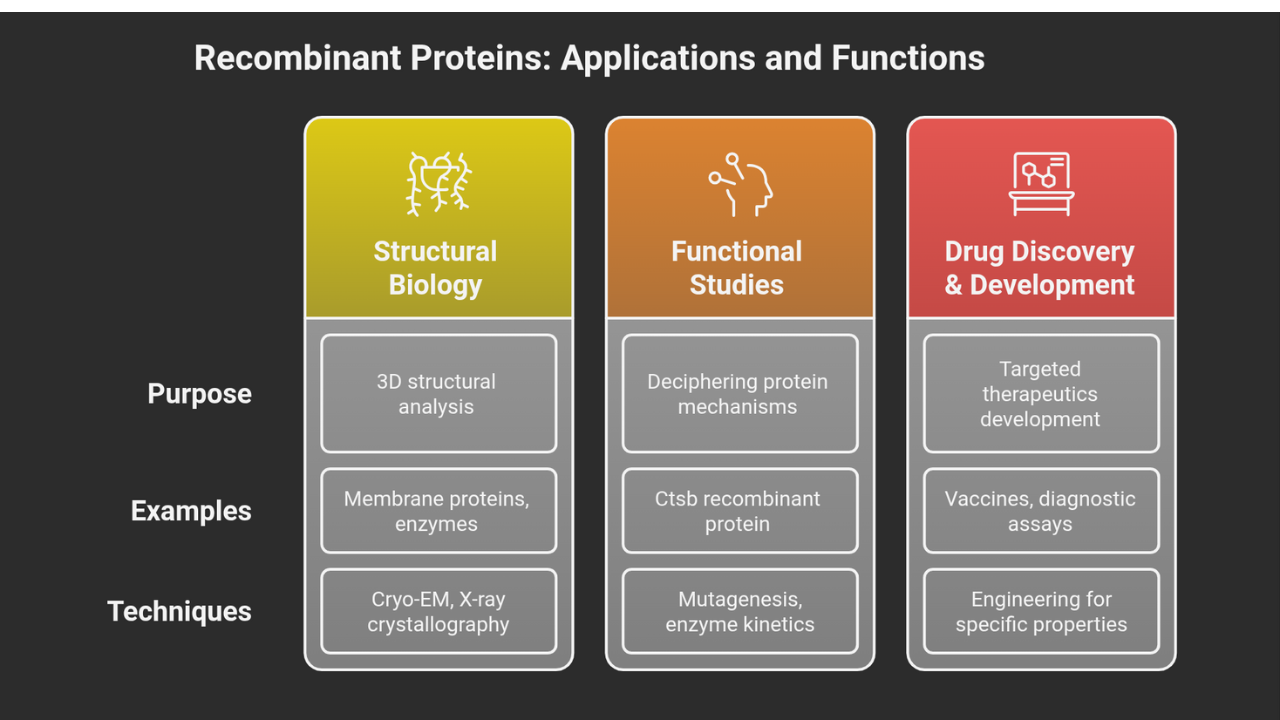Studying structural biology to understand 3-D models of biomolecules such as proteins and nucleic acids is crucial to building a bridge between structure and function.
Particularly for inaccessible proteins with complex structures, this approach is needed to analyze multi-subunit complexes, membrane proteins, and mutations specific to proteins.
Recombinant proteins remain integral to modern research. We will study their crucial role and importance in structural biology and functional studies.
Protein Membrane Structures: GPCR Breakthrough
GPCRs are G Protein-coupled receptors (GPCRs) and are among the families of drug targets. Their quantity in native tissues is quite low, and the hydrophobic nature of GPCRs makes it hard for their structural studies.
The development of recombinant protein expression systems was the breakthrough point for these receptors.
Researchers have now produced the mg quantities of functional GPCRs from cryo-EM and crystallization by:
- Introducing stabilized mutations
- Optimizing the codon usage
- Co-expressing the chaperone proteins in insect or mammalian cells
| NOTE: Detailed insights have been gained into ligand binding and protein technology through the acquisition of high-resolution structures of the β2-adrenergic receptor and the adenosine A2A receptors using recombinant protein technology. Some of these structures now lay the foundation for next-generation drugs for neurological and cardiovascular diseases. |
Relation to Protein Architecture & Biological Functions
There is a strong link between a protein’s 3D structure and its biological functions. Amino acids have a spatial arrangement in protein structure, which is responsible for how they interact with other molecules and determine cellular processes and physiological outcomes.
Researchers can map out the structure-function relationship by correlating different types of data with biochemical as well as biophysical assays. For rational drug design, this integrated approach is crucial because it identifies key structural features that need to be targeted to modulate protein activity.
Functional Studies for Mutagenesis: Introducing Enzyme Kinetics
The key player in functional studies for mutagenesis is the CTSB recombinant protein. There is an ability to genetically engineer site-directed mutations in the CTSB gene, which has helped in unlocking the relationship between structure and function.
Example – For the CTSB recombinant protein, many researchers have introduced point mutations at the occluding loop. The objective is to dissect the role of endopeptidase activity as well as exopeptidase activity.
When it comes to selective inhibition, enzyme kinetics assays using these mutants have shown that even a slight alteration in loop flexibility impacts catalytic efficiency and substrate specificity.
Functional Insights Through Recombinant CTSB Protein
Cathepsin B protein is in constant use to dissect the enzyme’s dual proteolytic activity, making it significant for protein degradation and cellular homeostasis.
There are mutations that highlight the loop’s role as a molecular switch. These mutations tend to increase loop rigidity by reducing exopeptidase activity and also preserving endopeptidase function.
Integration of Functional Data & Structural Data
For the study of specific proteins, one such example is the SARS-CoV-2 ”spike protein,” which has revealed a strong synergy between recombinant protein production, structural biology, and functional assays.
Many major steps in the right direction, such as the identification of neutralizing antibody epitopes, the development of mRNA vaccines, and even the rapid determination of structure by cryo-EM, are allowed because of the recombinant expression of stabilized spike ectodomains.
If we look at certain applications and functions of rProteins, integration of both functional and structural data is crucial:

The Final Take
The reach of rProteins technology has surpassed the obvious uses and made it possible for structural and functional studies of relevant proteins.
From atomic-level structural analysis to robust drug discovery workflows and precise functional interrogation, it’s no wonder that recombinant protein expression has taken the central stage for translational medicine and fundamental research.


















